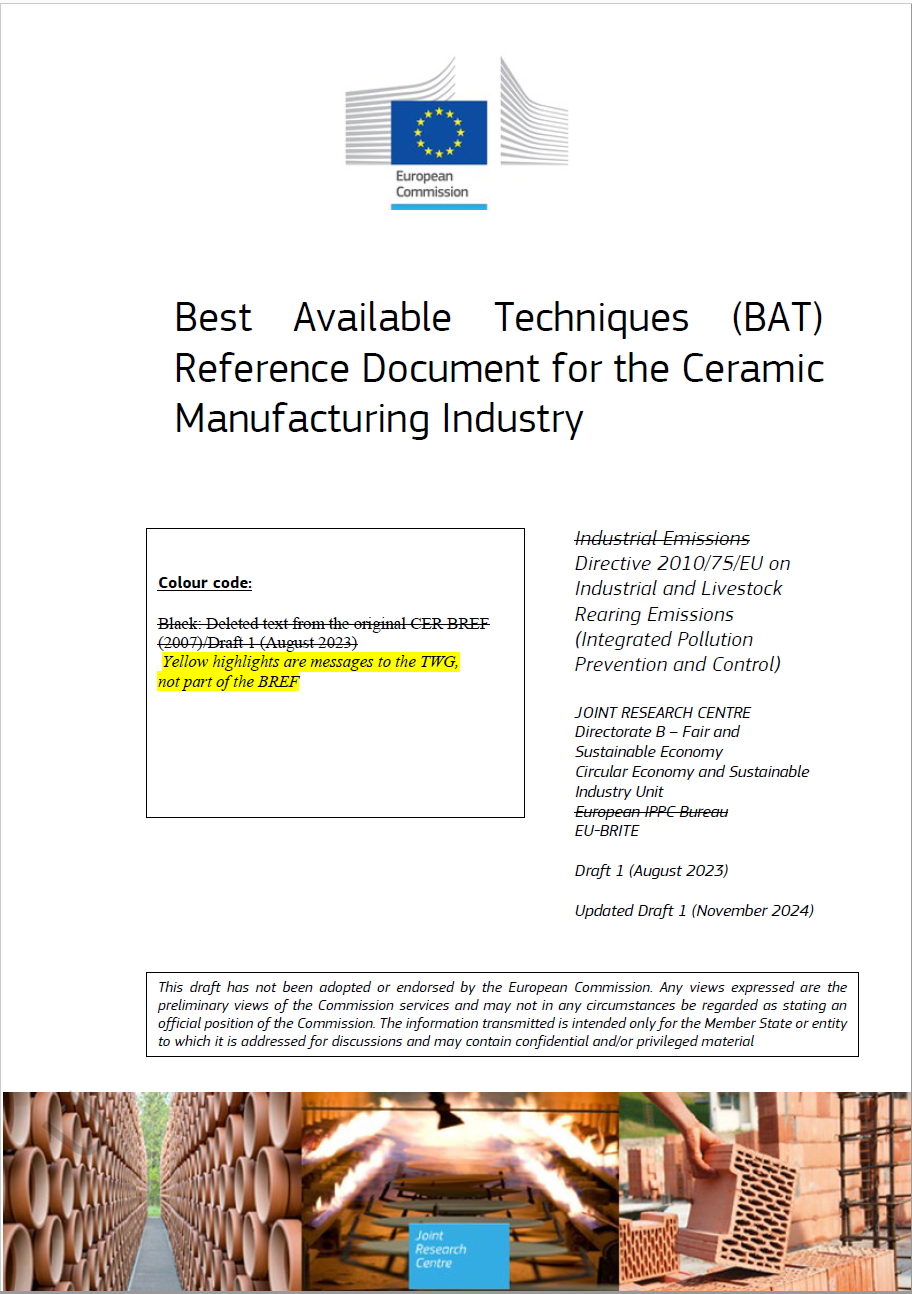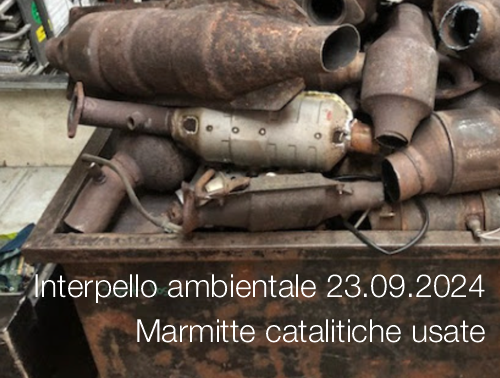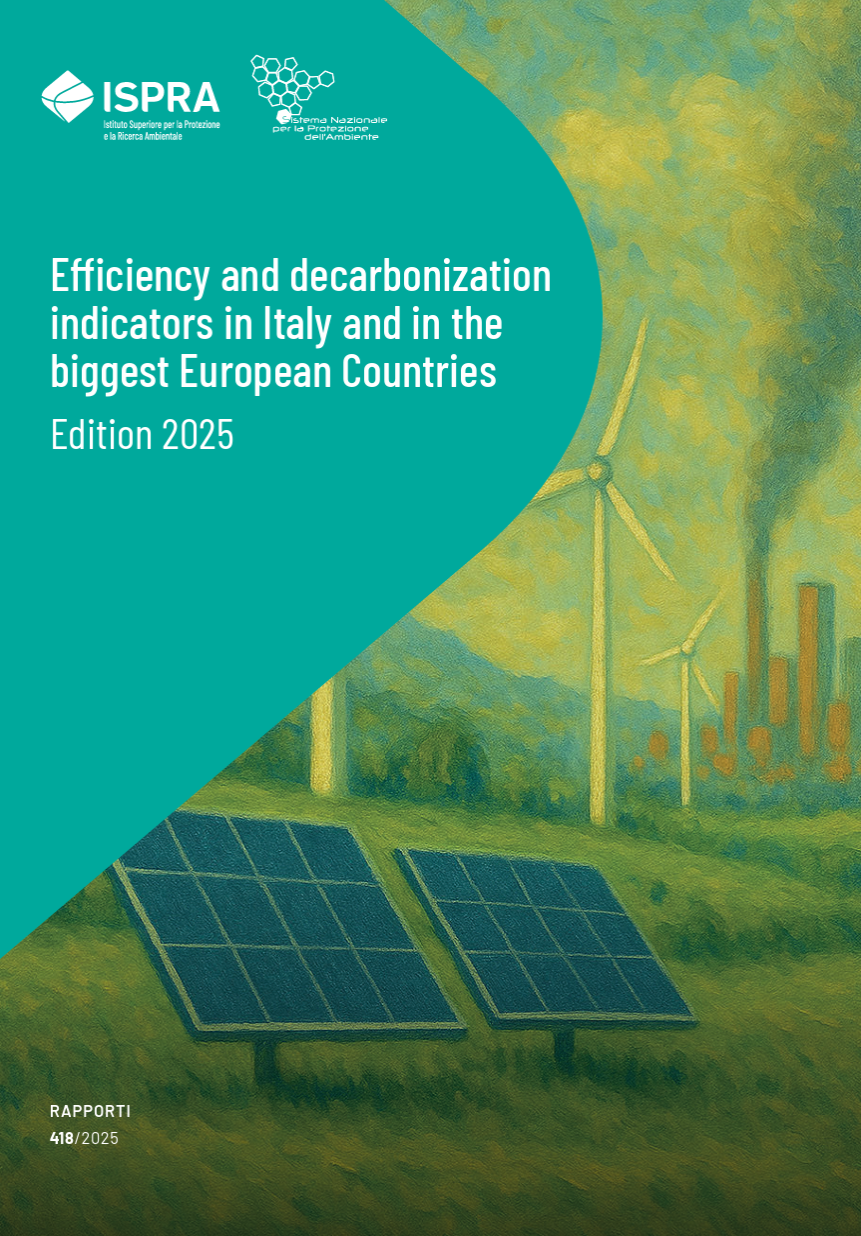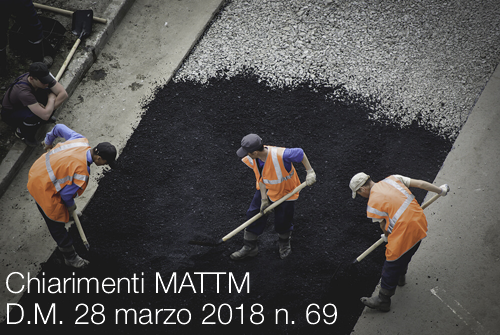
BAT Ceramic Manufacturing Industry / BREF Draft 11.2024
ID 23349 | 24.01.2025 / Attached
Best Available Techniques (BAT) Reference Document for the Ceramic / Manufacturing Industry Directive 2010/75/EU on Industrial and Livestock Rearing Emissions (Integrated Pollution Prevention and Control)
BAT Ceramic Manufacturing Industry / BREF Update Draft 1 - Draft 11.2024
Deadline to provide comments
The draft of the revised BREF for the Ceramic Manufacturing Industry (CER) has been issued for comments. Deadline to provide comments 28 Febraury 2025.
This BAT reference document (BREF) concerns the following activities specified in Annex I to Directive 2010/75/EU as amended by Directive (EU) 2024/1785/EU:
3.5. Manufacture of ceramic products by firing, in particular roofing tiles, bricks, refractory bricks, tiles, stoneware or porcelain with a production capacity exceeding 75 tonnes per day and/or with a kiln capacity exceeding 4 m3 and with a setting density per kiln exceeding 300 kg/m3.
6.11. Independently operated treatment of waste water not covered by Directive 91/271/EEC, provided that the main pollutant load originates from the activities covered by these BAT conclusions.
This document also covers the following:
- Directly associated activities such as spray drying and calcining of raw materials.
- The co-incineration of waste in ceramic manufacturing kilns and the on-site reuse of residues and recovery of waste.
- The combined treatment of waste water from different origins provided that the main pollutant load originates from the activities covered by these BAT conclusions and that the waste water treatment is not covered by Directive 91/271/EEC.
- On-site combustion processes that are directly associated with the activities covered by these BAT conclusions, provided that the gaseous products of combustion come into direct contact with objects or materials (e.g. in heating, drying, any other treatment of objects or materials).
This document does not cover the following:
- The quarrying of raw materials (e.g. clays).
- On-site combustion plants, generating hot gases that are not used for direct contact heating, drying or any other treatment of objects or materials. These may be covered by the BAT conclusions for Large Combustion Plants (LCP) or by Directive (EU) 2015/2193 of the European Parliament and of the Council.
- Waste incineration; this may be covered by the BAT conclusions for Waste Incineration (WI).
- Waste treatment; this may be covered by the BAT conclusions for Waste Treatment (WT).
- The manufacturing of glass ceramics, the production of refractory ceramic fibres and the production of frits; these may be covered by the BAT conclusions for the manufacture of glass (GLS).
- The porcelain/vitreous enamelling of metals.
Other reference documents which could be relevant for the activities covered by these BAT conclusions include the following:
- Production of Cement, Lime and Magnesium Oxide (CLM), for the production of magnesium oxide;
- Monitoring of Emissions to Air and Water from IED Installations (ROM).
...
This document is based on information collected from a number of sources, in particular through the TWG that was established specifically for the exchange of information under Article 13 of the Directive. The information has been collected and assessed by the European EU-BRITE (of the Commission’s Joint Research Centre), who led the work on determining BAT, guided by the principles of technical expertise, transparency and neutrality. The work of the TWG and all other contributors is gratefully acknowledged.
The BAT conclusions have been established through an iterative process involving the following steps:
- identification of the key environmental issues for the sector;
- examination of the techniques most relevant to address these key issues;
- identification of the best environmental performance levels, on the basis of the data available in the European Union and worldwide;
- examination of the conditions under which these environmental performance levels were achieved, such as costs, cross-media effects, and the main driving forces involved in the implementation of the techniques;
- selection of the best available techniques (BAT), their associated emission levels (and other environmental performance levels) and the associated monitoring for this sector according to Article 3(10) of, and Annex III to, the Directive.
Expert judgement by the European EU-BRITE and the TWG has played a key role in each of these steps and the way in which the information is presented here.
Where available, economic data have been given together with the descriptions of the techniques presented in Chapter 4. These data give a rough indication of the magnitude of the costs and benefits. However, the actual costs and benefits of applying a technique may depend greatly on the specific situation of the installation concerned, which cannot be evaluated fully in this document. In the absence of data concerning costs, conclusions on the economic viability of techniques are drawn from observations on existing installations.
Review of BAT reference documents (BREFs)
BAT is a dynamic concept and so the review of BREFs is a continuing process. For example, new measures and techniques may emerge, science and technologies are continuously developing and new or emerging processes are being successfully introduced into the industries. In order to reflect such changes and their consequences for BAT, this document will be periodically reviewed and, if necessary, updated accordingly.
[...]
Collegati
Allegati
|
Descrizione |
Lingua |
Dimensioni |
Downloads |
 |
|
EN |
38565 kB |
16 |



































